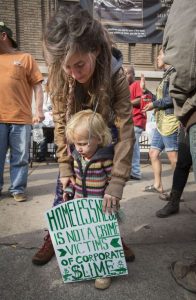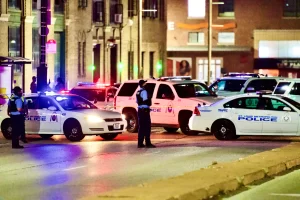Published in St. Louis American – April 27, 2017
 I was totally disgusted when I read what happened to the residents of the New Life Evangelistic Center (NLEC) when the city finally forced the closing of the homeless shelter. New Life opened its doors in 1976 and carried out its mission until the downtown site didn’t fit neatly into the city’s gentrification plan. Residents were re-traumatized with the forced removal and displacement by the city’s actions. Even though the embittered battle went on for several years, there clearly was no transition plan in place for NLEC’s residents. It made me wonder about the validity of any planning by the city to address homelessness.
I was totally disgusted when I read what happened to the residents of the New Life Evangelistic Center (NLEC) when the city finally forced the closing of the homeless shelter. New Life opened its doors in 1976 and carried out its mission until the downtown site didn’t fit neatly into the city’s gentrification plan. Residents were re-traumatized with the forced removal and displacement by the city’s actions. Even though the embittered battle went on for several years, there clearly was no transition plan in place for NLEC’s residents. It made me wonder about the validity of any planning by the city to address homelessness.
A recent ruling by a judge allowed the city to finally close the doors and evict homeless people. How sick does that sound – evicting the homeless? About 100 people were divided between a city recreation center and a city warehouse where the Forestry Division houses its equipment and chemicals. The rec center was temporarily closed to neighborhood youth to house the homeless.
Like most components of poverty, homelessness has been unduly racialized. The Public Policy Research Center at the University of Missouri – St. Louis released the Missouri Statewide Homelessness Study Report last year. It cited that African Americans are more likely to be homeless than any other race. Blacks account for 60-95 percent of the residents of various shelters, even though we’re about half of the general population.
The consequences of these stats filter down to the most vulnerable: our children. Youth between the ages of 6-17 years old represent a big chunk of those in shelters.
St. Louis Public Schools has experience a dramatic rise in homeless students. The housing situation doesn’t stay outside the classroom; it affects the learning environment. According to school records, students without a permanent place to lay their heads every night represents a quarter of the district’s total enrollment. When SLPS last reported the number of homeless students in the district at the end of the 2015-2016 school year, there were 5,451 students in the city district designated as homeless. That staggering number has tripled in the past five years.
Remember the plan created by St. Louis and St. Louis County to “end chronic homelessness”? It was a 10-year plan that would bring the issue to its knees in 2015. While I’ve reviewed the mid-term progress report, I’ve seen no evaluation of the 10 years and what it did or not produce.
We need to get our homeless problem under control because President Trump has an austerity plan for working people that will throw more people out of jobs and out of housing. St. Louis numbers are nowhere near cities like New York City (62,000 homeless). This doesn’t mean manipulating the Point in Time (PIT) count like Utah apparently did when it touted reducing its homelessness by a whopping 90 percent. The PIT count is the number of people without shelter on a given night in January that must be reported to the U.S. Department of Housing and Urban Development (HUD). The count is connected to receiving federal funds for homeless services.
Perhaps if we transcend the race of most of the homeless and focus instead on the children and their families, we may get closer to the roots of the issue. We may get to humanizing the lives behind the statistics. We may get to realistic ways to provide affordable housing for those most in need.



